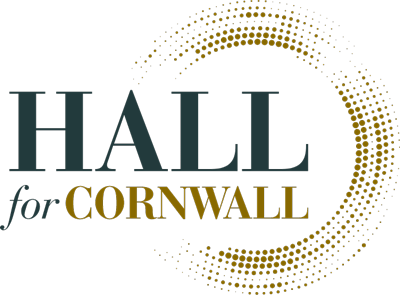Our theatre sits within Truro City Hall, a Grade II* listed building in the centre of Truro built in 1847.
Originally the market place and civic rooms for Truro, City Hall has always held municipal and social prominence for Truro and its surrounding communities.
Our National Lottery Heritage Fund project Revealing City Hall will uncover and share the building’s untold stories, historic functions and events, revealing the significance of the building to the people and culture of Truro. Some of the key moments in its history are below but do take a look at our History & Heritage microsite to discover more.
1807-9 The first market place and municipal rooms are built on the City Hall site. This building was soon deemed inadequate as a new market-hall for a thriving Truro. Less than forty years after it opened it was torn down to make way for the building you see today.
1820 Land to the side of the market is secured by the Town Council. In 1821 the last remaining Middle Row buildings are demolished, opening up the front of the Town Hall onto the newly formed Boscawen street.
1846-7 The building we now know as City Hall is built on the site and incorporates additional land to the side. Designed by architect Charles Eales, the market had 56 Butchers stalls and stalls for vegetables, hardware and other produce. It also housed the fire brigade and police station on the ground floor, and town hall and administrative offices for Truro Council above.
1858 A new clock tower is installed above the roofline on the Boscawen Street side of the building.
1866-76 The building is extended south towards the river, subsuming the Corn Exchange. The River Kenwyn ran directly to the back of the building and shops and boats would moor here to trade goods.
1877 The town of Truro becomes a City, and Town Hall becomes known as City Hall.
1902 The market begins to decline, provoking discussions about new uses of the spaces.
1907-12 The large market hall was divided for social purposes, including a roller-skating rink in 1907 and a cinema in 1912.
1914 A major fire began in the Clocktower and gutted much of the building. The city’s artworks were rescued but many official records were destroyed. The roof was replaced without change to its original appearance.
1923-7 The River Kenwyn is infilled in stages, and boats can no longer moor at the back of the building. This new pavement connects Lemon Quay and Back Quay, becoming the space many know as ‘The Piazza’.
1924-5 The market hall is remodelled to include a stage suitable for plays and performances.
1948-9 Inside the building, a balcony is built and shops appear under the arches on the Boscawen street side.
c1960 The hall is used for Fatstock shows, fashion shows and as a popular venue for music events and concerts.
c1985 The hall is much deteriorated and a community campaign saves it from redevelopment.
c1990 A campaign achieves funding for the rebuilding of the central space as a Theatre. The building remains home to Truro City Council.
1997 Hall for Cornwall opens as Cornwall’s largest theatre.
2018 Hall for Cornwall gains funding for major refurbishment, giving 1300 seats within a three-tiered auditorium, an unveiled heritage, lively bars and cafés, and creative digital hub with vibrant work and social spaces.
2021 Hall for Cornwall reopens.
Donate to our Community Club Ticket Bank and you’ll be giving local community groups the chance to experience the magic of the Cornwall Playhouse for the very first time. Your donation will go directly towards sharing the positive power of culture with those who’ll benefit most. Thank you.





